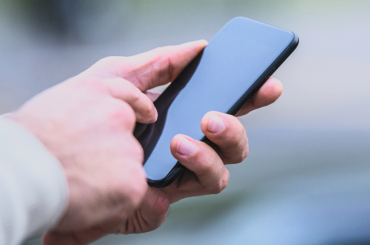The COVID-19 pandemic has been rough on nearly everyone’s mental health, and young people have been affected more than any other age demographic.
Between March and October 2020, the percentage of emergency room visits for children who had mental health emergencies rose by 31% for ages 12-17. There was also a more than 50% increase in suspected suicide attempt ER visits among girls in that same age range in early 2021 when compared with the same point in 2019.
Nearly every study that has examined the mental health impacts of the pandemic by age has found that the younger the person, the more likely they are to have been negatively affected.
The pandemic has also fueled a surge in drug-related deaths in the United States, with fatalities rising to 93,000 in 2020 — a 32% increase from 2019. That number climbed over 100,000 in a 12-month period for the first time in 2021, according to the Centers for Disease Control and Prevention (CDC).
Which drugs are specifically the biggest culprits in this jump? The Guardian found that accidental drug deaths among youths under age 24 increased by 50% in 2020, and a large part of that spike was due to the vast quantities of fentanyl that are appearing in the U.S.
Fentanyl is a synthetic opioid that is up to 100 times more potent than heroin, and federal authorities say that it is being pressed into millions of pills that are made to look just like traditional pharmaceuticals. With young people more active than ever on social media due to the constraints of the pandemic, the drug trade has found a new home.
Finding Potentially Deadly Pills Is Just a Click or Two Away
No longer does a teenager or college-age adult need to have a sustained connection to buy illicit drugs. Dealers have begun selling pills that are labeled as OxyContin, Percocet, or Adderall on places like Instagram and Snapchat.
A Tech Transparency Project (TTP) investigation created multiple Instagram accounts for minors between the ages of 13 and 17 and found that the platform’s algorithms helped the underage accounts connect directly with drug dealers selling everything from opioids to ecstasy.
Federal agents seized nearly 10 million counterfeit pills in the first nine months of 2021, more than they had in the previous two years combined. Tests conducted on the pills by the Drug Enforcement Agency (DEA) found that approximately 40% of the counterfeits contained enough fentanyl to kill.
“These are not overdoses; these are poisonings,” Shabbir Safdar, director of the Partnership for Safe Medicines, a nonprofit fighting pharmaceutical counterfeits, told The Guardian. “Nobody dies from taking a Xanax; nobody dies from taking a single Percocet. These are fake pills.”
Pushing for Accountability from Social Platforms
The Senate Commerce subcommittee on consumer protection, product safety, and data security convened a hearing in October with representatives from TikTok, Snapchat, and YouTube on whether tech giants do enough to keep children safe online — with the ability for teens to buy dangerous drugs as one of the primary arguments.
Snapchat has stepped up detection measures to root out drug dealers from its platforms, launching an education campaign to steer young people away from those pushing drugs within the app. Instagram wasn’t a part of that hearing, but Meta, the popular app’s owner, issued a statement saying that the company takes down a huge number of drug-related posts and has developed technology to proactively remove 96% of such content before people report it.
Even if these tech companies are committed to combating the dangers posed by drug dealers pushing possible fentanyl-laced pills to an unknowing young audience, concern remains that dealers are creating new accounts faster than social media companies can take them down. Once the algorithms capture a user’s behavior, more of the same content usually follows.
If you have a child who is active on social media — and if you’re worried that they may be experimenting with drugs — the best thing you can do is have an honest conversation. Any prescription pill that is obtained through means other than a doctor or pharmacy could have drastic consequences.
At this point, there has been too much evidence of tragedy to assume otherwise.
About Huntington Creek Recovery Center
Huntington Creek Recovery Center is a premier provider of comprehensive residential addiction treatment services for adolescent males ages 13-18 and adults age 18 and older of all genders. Set on a serene, 40-acre campus in northeastern Pennsylvania, our facility offers a safe and supportive environment where patients work in close collaboration with teams of experienced and compassionate professionals. For more information, visit www.huntingtoncreekrecovery.com.







